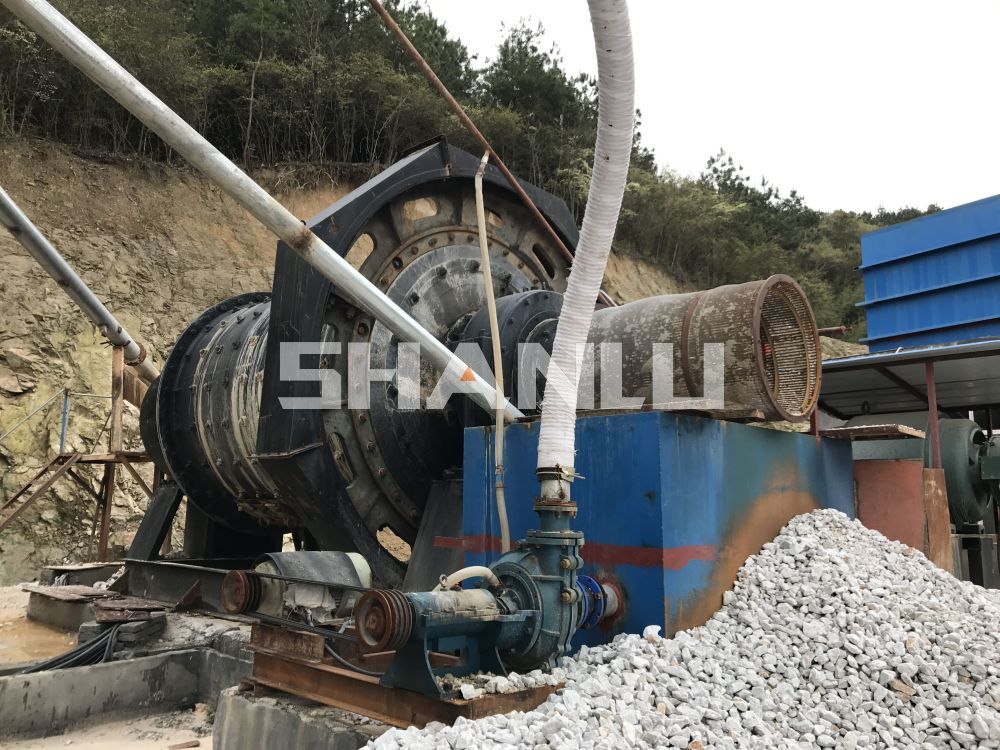Quartz sand wet rod mill is a specialized grinding equipment used in the
production process of quartz sand, mainly used to grind quartz sand raw
materials to the required particle size. Unlike dry mills, wet rod mills use
water or other liquids as the medium for grinding, which has better grinding
effect and is suitable for material processing that requires uniform and finer
particle size.

main features
Wet grinding: The working medium of the wet rod mill is water. By adding a
certain amount of water, the material is finely ground in the mill through the
action of water. The addition of water helps to reduce dust pollution, while
effectively lowering the temperature of the mill, reducing equipment wear, and
extending its service life.
Rod grinding medium: Unlike ball mills, the grinding medium of wet rod mills
is steel rods rather than steel balls. The function of steel bars is to achieve
material grinding through friction and impact. Due to the long and irregular
shape of the steel rod, it can provide more uniform grinding force and lower
screening rate for fine-grained materials.
Applicable materials: Wet rod mills are mainly used to process harder ores or
materials with larger particle sizes, especially ores like quartz sand. In
quartz sand production, wet rod mills can finely grind quartz sand to meet the
needs of subsequent processes.
Particle size control: Wet rod mills can effectively control the particle
size of materials. By adjusting parameters such as water flow rate, mill speed,
and grinding time, ideal particle size requirements can be achieved.
working principle
The working principle of wet rod mill is based on the friction and collision
between the grinding medium (steel rod) and the material in the rotating
grinding cylinder. The specific work steps are as follows:
Feed: Quartz sand raw materials enter the mill through the feed port, usually
with a certain amount of water or liquid added to keep the material moist,
reduce friction, and prevent excessive wear.
Grinding process: When the grinding cylinder rotates, the steel rod will
rotate together with the rotation, and the material will be hit and rubbed by
the steel rod, thereby grinding. Water plays a lubricating and cooling role in
this process, effectively reducing equipment wear and overheating.
Discharge: After a certain period of grinding, the finely ground quartz sand
material is discharged through the discharge port and usually undergoes
screening or grading treatment to obtain products of different particle
sizes.
Main applications
Wet rod mills are commonly used in the following stages of quartz sand
production lines:
Quartz sand fine grinding: Grind coarse quartz sand material into fine
powder, which meets the requirements of subsequent grading, washing and other
processes.
Ore processing: In some ore processing processes, wet rod mills are used to
crush or refine other types of ores, especially under wet grinding conditions,
which can improve the release of minerals from the ore.
advantage
Lower energy consumption: Compared with dry grinding, wet grinding can reduce
the friction between materials and mills, reduce equipment wear, and effectively
reduce energy consumption.
Reduce dust pollution: Due to the fact that wet process generates less dust,
it is more environmentally friendly compared to dry grinding.
Improving grinding efficiency: Wet operation can reduce the electrostatic and
adhesive effects of materials, help improve the dispersion of materials, and
thus improve grinding efficiency.
Strong adaptability: Wet rod mills are not only suitable for processing
quartz sand, but can also be used for fine grinding and grading of other
minerals.
Issues to be noted
Water resource management: Due to wet grinding, a large amount of water is
required. In areas with scarce water resources, water recycling and reuse should
be considered.
Grinding time control: The grinding time of the wet rod mill is relatively
long. If the grinding time is too long, it will affect the particle size
distribution and cause unnecessary energy waste.
The problem of material viscosity: In some wet grinding processes, if the
material contains high viscosity components, it may cause excessive friction
between the steel rod and the material, affecting the grinding effect.
summary
Quartz sand wet rod mill is one of the key equipment used for material
grinding in quartz sand production lines. It uses the lubrication and cooling
effects of water, and utilizes the collision and friction of steel bars to
finely grind quartz sand, which helps to improve production efficiency and
product quality. Appropriate process control, grinding time, and water resource
management will be key to improving the efficiency of wet rod mills.